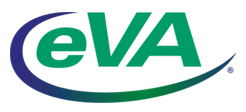This is the third and final article in a series of columns on employee relations and communications strategies for the Fredericksburg Regional Chamber of Commerce
By Susan Carol and Barbara Fiori
Our society shares and distributes information using e-mail, instant messages, RSS (Really Simple Syndication) feeds, blogs, digital video, and podcasting. These new communications channels are creating new expectations from our customers and employees. We now have the potential to distribute and react to information worldwide instantly, and speed collaborative processes involving sharing and learning. But, speed also increases risks. Much can go wrong very quickly.
The web is a powerful tool that has affected our culture more than any development since the Industrial Revolution. There are many new types of “journalists” – both individuals and corporate agents – who post stories on web logs (blogs) with little or no oversight. But who is credible? Organizations that mismanage their customers, employees, or any other groups of constituents risk being vilified in a matter of minutes on an Internet site.
Three ways that public relations (PR) and human resources (HR) professionals can support organizations today are to help them understand 1) which audiences are most important to their businesses; 2) what topics interest targeted audiences; and; 3) the best format and media to use for reaching them. Your constituents expect to be engaged in communication with you, not dictated to. PR and HR agents who are current on new media strategies can be invaluable to an organization.
For example, Ziff Davis Media has completely transformed its business from a conglomerate of magazines, to a custom media solutions group. They hold events, publish white papers, produce case studies, and promise lead generation database marketing, and the creation of micro sites. They have a database of more than 200 million enterprise information technology buyers, and they are willing, at a cost, to share that with their customers. News media today will help you establish relationships, not just print your press releases. It’s clear that a major shift is occurring, with the old media giving way to new media.
Internet search engine advertising, online yellow pages listings and digital banners have become powerful avenues for attracting new business. Such choices provide a way to measure and track who sees your marketing messages.
Some bottom line communications tactics must not change, however. It is still critical to have your leaders out front and well prepared to tell customer or company stories. And, the best media relations are built on relationships, trust, and credibility. To cut through the logjam of instant messages and email, it is still important to meet people or pick up the phone and call them personally.
Unlike machines, humans can make value judgments, use creativity and imagination, and offer social skills such as empathy that are essential when dealing with other people. It’s going to be increasingly important to look for these qualities in the people that you hire. You can automate a lot, but you can not automate this.
It’s important to consider all four different generations of people working together and the fact that some people are embracing technology far more than others. The “matures,” born between 1933 and 1945, are fascinated by new technology, but they are not as proficient with it as the baby boomers. The baby boomers, born between 1946 and 1964, are more comfortable with technology. The generation Xs, born between 1965 and 1976, are very proficient.
Internet penetration has now reached 73 percent of all American adults, according to Pew/Internet and American Life Project findings released in April. With this penetration level, it is no wonder why web-based learning now tops $33 billion dollars worldwide, according to the Gartner Group. Many organizations are using some form of online learning to educate and train their workforce. It’s attractive because it’s flexible, self-paced, cost-effective, and allows team-learning from remote locations. RSS feeds enable organizations to automate the download of selected updates in selected areas for usage at work or home.
Blogs (online logs) can be another way for employees to share ideas, experiences, and to learn from one another. However, companies may wish to consider establishing a policy on blogging. Individual blogs created by an employee may not appropriately express the views of your organization. We can not just ignore them, because reporters now troll blog sites for sources. Some reporters consider blogs more credible than press releases or speeches.
Email was supposed to make work life easier, but for many organizations it’s out of control. Some organizations are reducing email inefficiencies through “wikis, named for a Hawaiian word meaning fast. It is a piece of server software that allows users to create and update web pages easily and rapidly, either through a hosted site on the Internet or on the company’s Intranet. Since pages are posted in a central location, anyone with access can log on and start loading a document. This saves sending emails around through an approval process that slows everything down. A team of employees can collaborate on a single document or spreadsheet in real time.
There are constant technological developments creating new communications challenges and opportunities, not to mention distractions. It is imperative to develop a communications strategy that incorporates the experiences and talents of public relations and human resources experts who can harness technology and channel communications in productive ways that enhance the corporate culture and reputation.
This is the last installment in a series by Susan Carol, APR, and Barb Fiori. Please visit www.scapr.com to see the previous articles. You can reach Ms. Fiori at +1 +1 540 373-0804 or bfiori@cox.net. You can reach Ms. Carol at +1 +1 540 361-1274 or sca@scapr.com.





